
Welcome to our ‘Pro Tips’ section where Paul Drinkhall will be sharing regular tips on what it takes to play like a Professional Table Tennis Player!
Here’s a bit of background on Paul:
| Episode 1 – Explosive Forehand Topspin.
Paul explains the importance of timing, how to use all of your body to generate power and how he developed his powerful forehand. You’ll also see lots of footage of Tom Lodziak getting battered by Paul! It does take a lot of practice (years and years) to get a forehand as good as Paul’s, but if we can all learn from Paul a little bit, then we will have a stronger and more explosive forehand attack. |
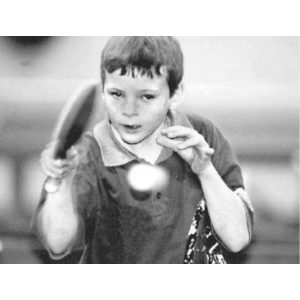 Here’s a topic that doesn’t seem to be discussed as much these days, I suspect due to the ever changing domestic competition calendar – the ‘off season’ and how it’s best used in terms of improving your game.
Here’s a topic that doesn’t seem to be discussed as much these days, I suspect due to the ever changing domestic competition calendar – the ‘off season’ and how it’s best used in terms of improving your game.
When I was younger, there was a definite summer break in between seasons; for us cadet and junior players especially, this coincided with the six weeks school holidays and our already intense training schedule could be increased again to allow for maximum improvements.
The Black and White picture was taken when I was 8 years old – I’m told it was the smallest shirt they had!
Without the worry of having to peak or prepare for a weekend competition, we could forget about the exercises that were designed to focus on ‘point winning’ and sharpening us up.

We could then concentrate on improving our base skills that would hopefully serve us well in the long term, such as:
– Footwork patterns
– Overall consistency
– Changes or adjustments to technique
– Physical conditioning
At the age of 9 with one of my first medals I started working hard on my celebration pose!
Working on these four areas, makes sense, as you definitely don’t want to be making adjustments to your strokes or not practising point winning exercises half way through a season (though this does depend in some respects on a players standard).
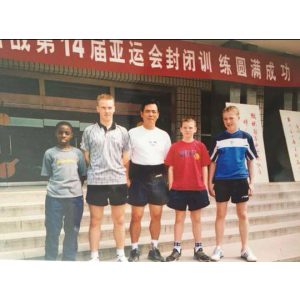 These days, the summer break seems to be shorter and shorter as the domestic competition calendar becomes more crowded, but my personal view is that if you can find a month or so away from competition to focus on improving the above elements of your game you will reap the rewards.
These days, the summer break seems to be shorter and shorter as the domestic competition calendar becomes more crowded, but my personal view is that if you can find a month or so away from competition to focus on improving the above elements of your game you will reap the rewards.
This is especially applicable to those players who may play a winter local league but then don’t compete in a summer league – use this time to your advantage guys and come back in September with an improved game and enjoy some big wins!
As a cadet I went to some great training camps and in some seriously baggy shorts…
Here’s how a two hour session for you and a practice partner might look like in the off season compared to when you are in regular competition for comparison.
Summer (Off Season) Session
7:00pm – 5 minute warm up, stretches etc
7:05pm – 10 minute knock up
7:15pm – 10 minutes each person hard regular footwork exercise, practising your weakest stroke as much as possible (if this is your forehand for instance, try designing an exercise where you play 2 or 3 forehands to every 1 backhand).
7:35pm – 10 minutes each person hard regular footwork exercise, practising your weakest stroke as much as possible…. Again! Yes you did hear me correctly, time to get a sweat on guys!
7:55pm – 10 minutes each person hard irregular footwork exercise, practising your weakest stroke as much as possible.
8:15pm – 10 minutes each person hard irregular footwork exercise, practising your weakest stroke as much as possible, this time including a service element.
8:35pm – best of three ends match play.
8:50pm – 9:00pm – physical conditioning. See Play it Like Paul article on TT fitness for some ideas of how best to use this fifteen minutes – better still, make it thirty minutes before you go home to your healthy steak or chicken breast and salad….!!!
Session (Mid-Season)
7:00pm – 5 minute warm up, stretches etc
7:05pm – 10 minute knock up
7:15pm – 10 minutes each person hard regular footwork exercise, practising your weakest stroke as much as possible (if this is your forehand for instance, try designing an exercise where you play 2 or 3 forehands to every 1 backhand).
7:35pm – 10 minutes each person hard irregular footwork exercise, practising your strongest stroke for at least 50% of the time, starting with a service
7:55pm – 10 minutes each person serve and receive exercise, concentrating on simulating match type situations and scenarios and point winning play (for example 3rd or 5th ball attack).
8:15pm – Match play
8:50pm – 9:00pm – physical conditioning focused around speed, utilising exercises such as fast side steps, sprints, and anything which develops explosive speed
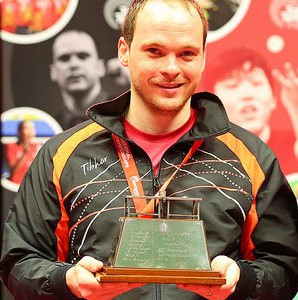
To sum this up, the key differences in the ‘off season’ are:
– Practise your weaknesses twice as much as your strengths to make big improvements to your stroke play.
– Practising physically demanding regular footwork exercises will improve effective technique, leg strength, movement and consistency.
– Slightly less match play and more time spent on developing areas of your game which need attention.
It’s time to take the above and put it into practice guys, ready for some big wins next season…
Good luck!
Today I’m going to look at a stroke that has become increasingly important to the point of essential in modern day table tennis – the forehand counter topspin, or re loop shot.

This is a stroke that was mainly a European innovation in the early 90s, with one player in particular, the Frenchman Jean-Phillippe Gatien (World Champion and Olympic Silver Medal Winner) using it to great effect. His entire game was based on quick footwork and taking the ball very early (or ‘off the bounce’) with his short and incredibly quick forehand topspin stroke, to take time away from the opponent and prevent them from adapting.
One of the main differences here is that Gatien would ‘re-loop’ or loop the opponents loop back at them, using the spin and speed which they had generated against them, which was very different to most players at the time who would either block the incoming loop shot or move away from the table to loop the ball back.
This shot has now established itself as an absolute main stay in world class table tennis, with virtually every player using it to varying degrees in their play – but also it’s a very popular and effective shot in both National and Local table tennis leagues. It’s well worth mastering!
The key element here is timing. If you watch the top players do it (and there’s MANY examples on YouTube) it looks rather easy; if only that was the case! However, with a little practice this shot will quickly become part of your arsenal, and like so much of our sport it becomes a natural trained reaction.
Watch some of the world’s best counter loops!
Let’s break the stroke down into a game scenario. I’m writing this from my perspective as a right handed player using my forehand…
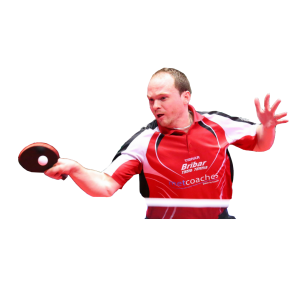
– Your opponent serves short, and you are unsure of the spin; you decide that a long and fast, well placed long push is the best option for a return.
– Your opponent opens up with a topspin loop shot, wide to your forehand side.
– One of the KEY points here is to have recovered after your push receive. Your feet and body should have returned to neutral position, enabling you to have the best chance of dealing with your opponent’s next stroke. THIS IS CRITICAL!
– From the neutral position, you can take one side step directly side ways to your right so your now in the centre of the forehand side of the table. By moving directly sideways and not backwards and sideways, you give yourself much less ground to cover and put yourself in the right position to take the ball early (‘off the bounce’).
– Starting with your arm at a 90 degree angle, stroke over the top of the ball with a shortened forehand topspin loop action that should finish just a couple of inches in front of your nose. The stroke requires virtually no shoulder action at all, and is 80% forearm and around 20% wrist action, pivoting from the elbow.
– You must take the ball just after the bounce, and well before it reaches the peak of the bounce. This way, the topspin from your opponents shot has much less chance to kick and take effect, the ball will be easier to control, you’ll be able to get over the ball very easily and most importantly you’ll take time away from your opponent.
Sound easy? If only! It’s pretty challenging to get this stroke mastered, but after a good few weeks of practice several times a week this shot will begin to appear in your game as a matter of course. It’s instinct, you’ll play the shot without even realising! 
Here’s three simple but effective ways to practice this, increasing in terms of difficulty:
Week 1 – 2: Your opponent serves short, you push long and fast to the body, they open up with a topspin loop wide to your forehand – you re loop the ball (TAKE IT EARLY!!) wide to the opponent’s forehand then free play.
Week 3 – 4: Your opponent serves short, you push long and fast to the body, they open up with a topspin loop anywhere to your forehand – you re loop the ball (TAKE IT EARLY!!) wide to the opponent’s forehand or body, then free play. By this point, your anticipation should be increasing and the shot should be in your muscle memory – this is more difficult!
Week 6 onwards: Your opponent serves short, you push long and fast or flick long and fast to the body or wide forehand, they open up with a topspin loop anywhere from the middle of the backhand court to wide forehand court – you re loop the ball anywhere, then play free.
This third exercise is particularly tough, but most beneficial; don’t be disheartened if you don’t enjoy success immediately, it does take practice to master this technique.
Players who have mastered this technique include Zhang Jike, Ma Lin, Wang Hao, Ma Long, and Timo Boll… here’s a short YouTube clip which shows some great counter looping.
Watch some of the world’s best counter loops!
WE HAVE EXAMPLES HERE OF RE LOOPING FURTHER AWAY FROM THE TABLE AS WELL – DON’T CONFUSE THE TWO!!
This is important, as it’s a different technique entirely.
We’ll start this series with the most important stroke in the game – you guessed it, the service!
If you’re serious about improving as a player, I can’t stress enough the importance of the service stroke in table tennis. Remember – it’s the ONLY shot in the game that you’ll ever have complete decision making control over. Once the ball is in play, to some extent your shots will be dictated by what your opponent does to the ball; but when that ball is in the palm of the hand prior to serving, you and you alone can decide what happens next!
As well as the obvious spin and speed aspects of the service in table tennis, I’d like to touch upon another aspect that’s important, and that’s exactly where the ball will bounce on your side of the table when you serve, and how this will effect where it lands on your opponents side.
Remember, the four fundamentals of table tennis when playing the ball are… Speed, Spin, Height, Direction.
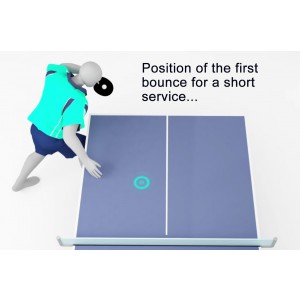 When we think about our service when trying to play a short service, we must realise that for the ball to go short (ideally bouncing twice) on your opponent’s side of the table, we need to aim to have the ball land relatively closely to the net on our side of the table first. This is something we should be considering when we practice our serves; watch where the ball is landing on your side of the table, and watch the results when the ball travels over the net and lands on your opponent’s side of the table. You’ll notice that where you aim to have the ball land on your own side has a very direct result on where it lands on your opponent’s side… Ideally, for a good length short service (remember you don’t want it too short, as this makes the service easier to flick or for your opponent to keep the return very tight to the net, preventing you from making the first attack) you should be aiming to have the ball land somewhere in the region of the mark in figure 1.
When we think about our service when trying to play a short service, we must realise that for the ball to go short (ideally bouncing twice) on your opponent’s side of the table, we need to aim to have the ball land relatively closely to the net on our side of the table first. This is something we should be considering when we practice our serves; watch where the ball is landing on your side of the table, and watch the results when the ball travels over the net and lands on your opponent’s side of the table. You’ll notice that where you aim to have the ball land on your own side has a very direct result on where it lands on your opponent’s side… Ideally, for a good length short service (remember you don’t want it too short, as this makes the service easier to flick or for your opponent to keep the return very tight to the net, preventing you from making the first attack) you should be aiming to have the ball land somewhere in the region of the mark in figure 1.
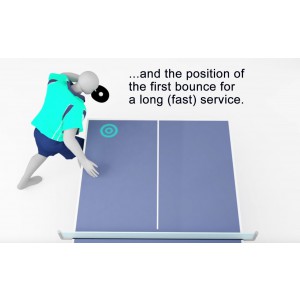 If you’re aiming to do a long service as a variation (you may see that your opponent is moving into the table too early to receive your serves, or you may think that you can catch them by surprise with a different and unexpected service, or you may even realise that serving long to a certain area of the table can yield a particularly weak return that you can capitalise on) then you must remember the importance of serving with some speed! A long slow service will give your opponent lots of time to react and invite the first hard, direct attack. Remember that even modern defensive players will very often exploit a long weak serve with a good attacking stroke, so taking them by surprise and playing the serve with speed is key!
If you’re aiming to do a long service as a variation (you may see that your opponent is moving into the table too early to receive your serves, or you may think that you can catch them by surprise with a different and unexpected service, or you may even realise that serving long to a certain area of the table can yield a particularly weak return that you can capitalise on) then you must remember the importance of serving with some speed! A long slow service will give your opponent lots of time to react and invite the first hard, direct attack. Remember that even modern defensive players will very often exploit a long weak serve with a good attacking stroke, so taking them by surprise and playing the serve with speed is key!
For the attacking player, a long service is often used as a variation and to ‘keep the opponent guessing’, or to try to break up their rhythm. If the service is not played with speed, or it lands too short on the opponent’s side, then it’s very easy to deal with and their return will put you under pressure immediately.
For a long serve to be difficult for your opponent to deal with, try to disguise the service until the last moment. You can practice making it look like another short serve, and then simply using your wrist angle your racket downwards so it’s pointing towards the floor and hit through the back of the ball at speed. This takes some practice to get right, so don’t worry if your first few attempts aren’t successful!
You should aim for the first bounce to be landing in the region of the mark in figure 2. You can see how this differs to the first bounce for the short serve; the ball bounces much closer to you, and the extra speed on the ball will take the service longer and quicker. As an extra tip, if you can direct this towards the opponents body or crossover point, it can make it very difficult for them to react quickly and play a good receiving stroke. Hopefully you will either win the point directly through an error from them, or you will take them by surprise, leading to a weak return which you can then follow up easily with a good shot of your own.
That’s it from me for now, so remember to spend some time practicing those serves and disguise them as much as you can! It’s a really worthwhile thing to practice if you’re looking for a fairly easy way to improve.
For the second instalment of this series, we are carrying on with looking at the service; this time we’ll look at how to change and vary the spin on your service action. Master this and you’ll add several points on your game, but it takes TIME so don’t worry if it doesn’t happen overnight. Keep at it!
A key part of an effective spin (or indeed no spin!) serve is the disguise which we apply to it. This can fool your opponent into making a weak return which we can then follow up with a preferred stroke of our choice, or even better the opponent can fail to return the serve at all.
Some masters of disguising the service that you may wish to watch on YouTube include Jan Ove Waldner, Liu Guoliang, Werner Schlager, Ma Lin, Ma Long, Xu Xin, Koki Niwa and Dmitrij Ovtcharov (his backhand service is particularly effective).
Last week we looked at the length of service being critical, and this applies here too. If you are serving long unintentionally (meaning a short serve that is ‘just drifting’ long) then the amount of spin can become in effective, as a good topspin loop from your opponent will still be the most likely outcome. In your service practice, try to always get as much spin as possible whilst maintaining the control to serve short! As your feeling for the ball and control develops with your technique, you’ll be able to impart more and more spin on the ball and also keep the service tight to the net and short on your opponent’s side.
Figure 1 shows where to contact the ball and the direction of the bat for a heavy backspin or chop serve. As you can see, the best place to make contact on the bat is at the leading edge – this will allow the rubber to ‘grip’ the ball and impart the spin, and it’s also marginally where the bat is travelling the fastest.
Ideally, your bat should be almost horizontal and you should flick your wrist at speed on
contact. Remember to keep a thin contact and ‘brush’ or ‘cut’ underneath the ball, and imagine it almost ‘rolling’ over the surface of your bat.
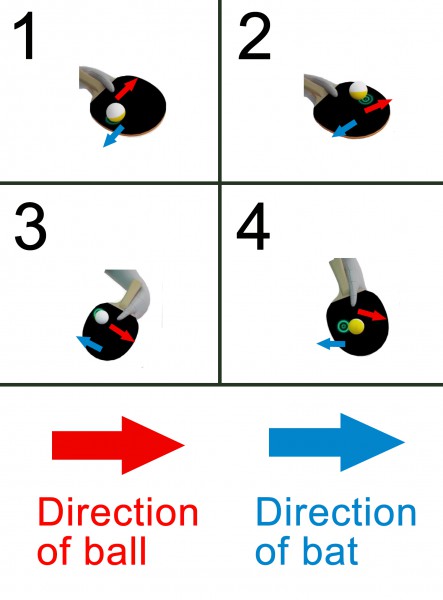
Figure 2 shows you where to contact the ball and the direction of the bat for a float or no spin service. This service is extremely useful if you can learn to make your action almost identical to your backspin service; your opponent will miss-read the spin, open the bat head too much when receiving and the ball will then come back to you higher than usual, giving you the time and additional height to make an easy first attack!
As the diagram shows, the best place to contact the ball is at the top or back edge of the bat – this means the ball has minimal time and space to ‘roll over’ the bat surface, meaning that very little spin can be imparted. To disguise this service to make it appear like a backspin serve, you can keep your bat virtually horizontal and the action the same, so the only thing that changes is the contact point.
Some players may also use the wrist less as to not impart any spin at all; you should practice this to make the difference between your backspin serve and float serve appear minimal!
Figure 3 shows where to contact the ball for a heavy topspin service. The best place to contact the ball here is once again at the leading edge of the racket, and the ball will ‘roll over’ the bat face in the opposite direction.
NOTICE THE DIFFERENT ANGLE OF THE BAT, as this is critical for the success of this service and the disguise! Your action can be virtually the same to your backspin service, but you are catching the ball around the back and underneath of it this time, and the contact point is different; it’s when your bat is on the way back up to finish the action.
If we look at the three serves we have covered so far, figure 1 could be the start of your action, figure 2 a split second later, and figure 3 a split second after that; your racket has continued to travel and it’s at what point you hit the ball, and where on the bat face itself, that will make ALL the difference.
Mastering a top spin serve that looks very similar to your backspin serve is a huge asset, as your opponent will make several weak returns and become very tentative and unsure when receiving.
Finally, Figure 4 shows a variation that can be useful, which is almost ‘straight’ sidespin. Here, we are not cutting or brushing underneath the ball, but simply at the back of it in an almost vertical position. This will generate straight sidespin with virtually no top spin or back spin at all, though of course there are many slight variants you can apply, with slight back spin and side spin, slight topspin and sidespin… you can experiment!
The side spin serve will ‘kick’ one way or the other, depending on which way you have your bat travelling, meaning it’s tricky for the opponent to be in the correct place to receive with as much control as they would like. It will also ‘rebound’ from their bat and spin the opposite way, meaning they have to think a lot about how there bat angle and how they will control this. Think about what 3rd ball shot you would like to play, and where you would like the ball to come back on your side of the table.
Using side spin in conjunction with back spin or topspin is a brilliant way to help disguise your service also, so practice brushing behind, underneath, and around the back of the ball at different points of your rubber surface and see what effect this has on the ball.
That’s it from me this week, now it’s time to get a big box of balls and practice those serves! Pick one serve at a time and try to master it for ten minutes, then try to do another spin variation with the same action. Remember, patience is a virtue!
In my third ‘Play it like Paul’ instalment, we are going to look at receiving service, something which I feel is possibly neglected slightly at club and intermediate level.
If we take the service as the most important stroke in the game (the ONLY time you have complete, sole control over what happens next to that ball!) then it follows that the receive of service is the second most important stroke. The reason is exactly what you may think; it’s the first chance in the rally that you will have to influence the outcome of that particular point. 
It takes a long, long time to become a great receiver and something which can’t be ‘coached’ as such is the matter of ‘experience’; the more types of service you face, the better you will become as your knowledge level increases and practice against that type of service increases.
One thing we CAN coach and improve on though is giving ourselves the best chance of doing everything else right, namely thinking how to receive a service (what type of stroke to use) and then getting that receiving stroke technically sound to allow us to make the best return we can!
Let’s look this week at the service receive that is used enormously at the top level of the game, and should be used much more at other levels – the short touch/short push receive. The aim of this type of receive is to prevent your opponent from making the first attack, or ‘third ball attack’ as it’s commonly known. If you are an attacking player, it’s a great idea to think about making the first attack in the rally yourself, and at the first opportunity – if you allow your opponent to do this, then you are in effect setting yourself up to play a defensive block or tricky counter loop.
This rule of thumb now applies to defensive players too; the modern defender such as Panagiotis Gionis, Joo See Hyuk, Ruwen Filus or Chen Weixing all have brilliant attacking skills to mix the play (a tactic kick started by the Japanese defender Norio Takashima in the 1970s) and they will often elect to play a short push receive to try to make the first attack also.
The basic idea is to prevent your opponent attacking first by receiving with a short (we are looking for the second bounce to be a couple of centimetres short of the servers white line at the end of the table) push or touch that is low over the net, preferably with a little backspin to prevent a flick, and not TOO short so that it’s easy for your opponent to deal with.
Here’s a breakdown of the technique. Figure 1 shows a backhand receive, but the same rules below apply to a forehand short touch too!
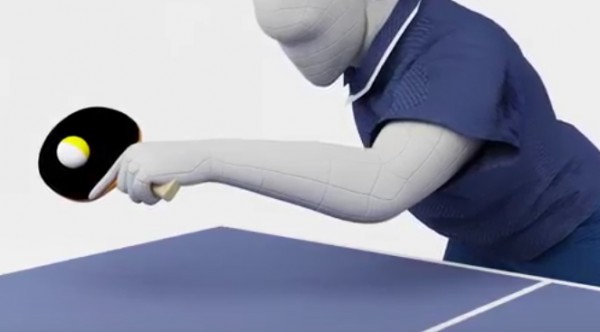
As a slight word of warning, remember that there’s nothing easier to deal with than a half long touch or loose return. If you are unsure of the spin on the service and you don’t think you can touch the ball short, you are much better off playing a positive long dig/heavy push or flick and trying to get the return as deep as possible.
As you improve at this, try to touch the ball short with more backspin; this helps to keep the return low, tight to the net and stops your opponent from making an easy flick. Keep your wrist relaxed and try to ‘cut’ underneath the ball very slightly to impart a small amount of backspin. The stroke should be the same, only you will use your wrist ever so slightly more and your contact on the ball will be different.
Don’t try to touch a half long service short! This is incredibly difficult to do well. If your opponents service is long (the second bounce is after the line) then try to make the first attack yourself; trying to touch a long service short will more times than not end up as a disaster!
For an example of a fantastic receiver of the ball, look up the Chinese player Ma Lin on clips on youtube; his touch and technique around the net are second to none. He’s a pen hold style player, but the positioning and techniques are virtually the same.
That’s it for this week. Don’t lose patience with this, it’s a tricky technique to master, but well worth the time investment!
In the fourth instalment of my ‘Play it like Paul’ series, I’m going to talk about the block shot; this is without doubt one of the most under practiced shots in the book, especially at the intermediate level.
An early memory for me was at my first ever club, with a good player who loved to train hard, big physical exercises and lots of attacking strokes. The coach was trying to get this player to focus more on blocking as a key area for improvement, and the player’s reaction was… ‘Why do I need to practice the block when I can simply loop everything back?’ Why Indeed!
This notion that you are an ultra attacking player who will simply re-loop or counter topspin any attacking stroke that comes your way is idealistic at best and downright naïve at worst! Sometimes, your opponent will play a very heavily spun or very quick (or both!) attacking topspin shot at you and you won’t have the time to react and play such an aggressive stroke, or you may be slightly out of position, therefore not able to ‘get over’ the ball to counter any topspin effectively.
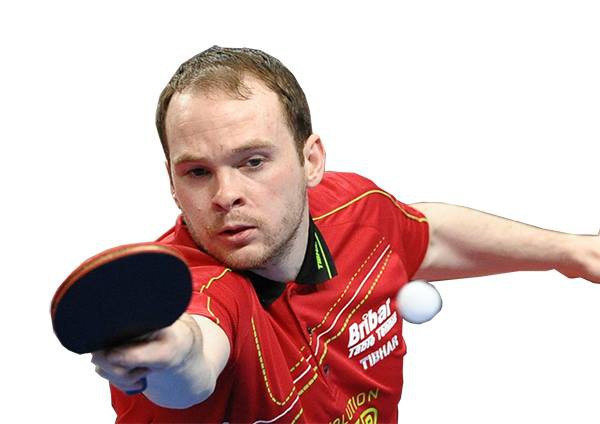 In week one, we talked about the importance of serving well. If your opponent has good length and well disguised spin serves, you may take a while to adapt and adjust to these, so your returns could be comparatively weaker, allowing them to make a hard and direct first attack. The key point here is that no matter how good your own attacking game is, you will never be able to stop your opponent from attacking or make the first attack every single time. Get used to it guys, it’s a fact of table tennis!
In week one, we talked about the importance of serving well. If your opponent has good length and well disguised spin serves, you may take a while to adapt and adjust to these, so your returns could be comparatively weaker, allowing them to make a hard and direct first attack. The key point here is that no matter how good your own attacking game is, you will never be able to stop your opponent from attacking or make the first attack every single time. Get used to it guys, it’s a fact of table tennis!
The backhand block is used much more in table tennis than the forehand block, particularly as the level gets higher. It’s true that attacking players in modern table tennis will ‘re-loop’ or counter topspin from the forehand probably 80% or even 90% of the time if they can. This is much more difficult from the backhand, so you will see the backhand block used much more in modern table tennis.
For either forehand or backhand block, key technical points are…
– The stroke should be short and start virtually on the ball, with almost no backswing.
– Your racket head angle should be adjusted depending on how much topspin is coming over the net generated by your opponent’s stroke. Open the bat angle slightly to deal with less topspin from your opponents stoke, and close the angle slightly to deal with more topspin.
– Your bat should be positioned around 30cm in front of your body at the start of the stroke. Here’s a tip; sit at a desk and pick up a pen and paper as though you’re about to write a letter. Your arm should bend naturally at around 90 degrees in front of you. This is almost an identical position to where your arm and hand should be positioned for a table tennis block shot!
– You should take the ball early, and before the top of the bounce. This makes any oncoming topspin easier to control, and also takes time away from your opponent.
– STAY RELAXED! Tensing up at the point of contact will result in you losing hand feeling and control, meaning you will struggle to control the topspin on the ball. Try to feel the ball!
– At the point of contact, use your hand. Keep this in mind! Gently roll your hand and wrist forward so you are in control of the ball.
– You DO need to play a stroke and not just hold your bat head in the way, you will only have control of the ball and be able to control the spin if you do this!
It’s a great idea to set exercises that practice the block shot…
– You can practice your service receive (perhaps a heavy backspin ‘dig’ to your opponents body or cross over point) with the opponents third ball being a topspin loop shot to either your forehand or backhand. You can then practice either forehand or backhand block, or even a re-loop or counter topspin should this be possible; remember, try to treat each ball on its merit!
– Ask your opponent to play consistent, medium paced alternate top spin shots to your backhand and forehand. You can then practice moving from the backhand side to the forehand side, blocking on each corner.
– A good variation of this exercise is to ask your opponent to occasionally play one of the topspins to your body, or cross over point. This helps with anticipation and ensures you get used to adapting and moving slightly to play a backhand block or a forehand block, instead of being caught out!
Over the years, there have been many incredible exponents of the block shot, who have used it to brilliant effect. One player does stand out here, and worth watching how he used the block to control his opponents attacking shots, making life difficult for them and creating angles for his own attacking shots – the great Jan Ove Waldner, the Swedish maestro. Have a look at this highlights clip of the great Swede on YouTube for an example of how to REALLY withstand an opponent’s attack with the ability to block. For possibly one of the finest examples of ball control I’ve ever seen, check out the point at 3:08; absolutely incredible!
https://www.youtube.com/watch?v=bPPndON0d8Y
Something I’m asked about a lot when I’m doing my coaching days and chatting to other players in general is how to play against long pimples; or the dreaded ‘funny rubbers’ as they can be known!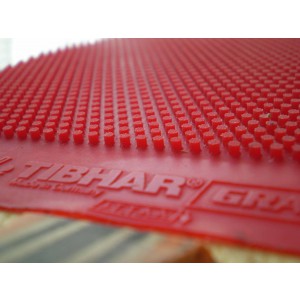
I’ll start by saying that in our sport, we are possibly more influenced by materials than any other that I am aware of. Through chatting to other athletes from different sports, it’s always came across to me that they don’t have either the sheer volume of variations available, nor the different types of rubber… I’m talking long pimples, short pimples, medium pimples, anti spin etc. Once you start bringing in different sponge thicknesses (including no sponge of course), different ways of ‘treating’ rubbers (sometimes illegally!!) it can become a minefield.
I’m going to focus on long pimples here, as I have found that this is (apart from reversed rubber) the most common type of material used by combination bat players. Also, I must say that sometimes these types of rubbers can take many hours of dedicated practice to play against, and many players really learn how to use them in a very skilful manner, so in no way would I say that they are inferior in anyway. I couldn’t… sadly it was only last season I lost to the great German defensive combination bat player Ruwen Filus!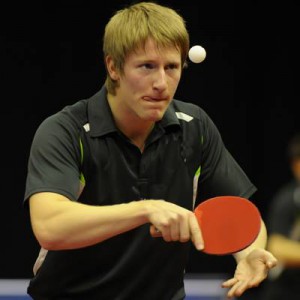
However, the good news here is this… despite the many variants, the basic types all ‘respond’ and behave in the same way. And here’s the really good thing to know if you are one of the players who tends to struggle against ‘funny’ rubbers – you can practically decide what spin is going to come back to you.
Yes, you did hear that correctly; your opponent will have very little choice as to what spin comes back over the net from their rubber. This is the key to playing against a long pimpled player, and it matters not if they are a classic away from the table chopper or even a stand up to the table blocker with almost frictionless pimples – the variation is very small.
Ok. Here’s the basic rule… If you play:
These are the three scenarios you are faced with. So you can see that your shot will dictate the spin you get back; the more topspin you apply to your attacking shot, the more backspin you will be faced with. If you do a push return, you will get a ‘floated’ or no spin ball back… and so on.
With this in mind, here’s some great tactics to use against players who are chopping or blocking with long pimples – these apply whether they play with very little, maximum or no sponge. Just remember that the less sponge underneath the pimples, the more extreme the ‘reverse spin effect’ will be… but the trade-off is that these are harder to use and play strokes with.
– You serve short with no spin (heavy sidespin only helps the pimple player get more effect and ‘wobble’ on the return, so stay away from this until you are confident!). The next ball will be float, so easily attacked with a strong aggressive shot; there is no reverse spin effect to consider.
– You serve long and fast with no spin; the pimple player either blocks or chops the return. This return will also have very little reverse spin effect, perhaps a small amount of backspin due to the speed of the ball on a long fast serve having a little topspin on it – this will basically still be a very mild backspin or float return, so you can attack relatively easily without worrying too much about having to ‘lift’ the ball.
– In the rally itself, you play an aggressive topspin loop and the pimple player blocks or chops the ball back; this will result in a heavily backspun return. Your next shot should generally be a ‘touch’ or shot push return, this will help you safely return the ball without having to continue to lift your own ‘reversed’ spin over the net.
Also, for those who are starting to get the hang of this ‘reverse spin’ rule; you guessed it,
if you push to the pimple player, you will then get back a ‘float’ return that you can easily attack aggressively. 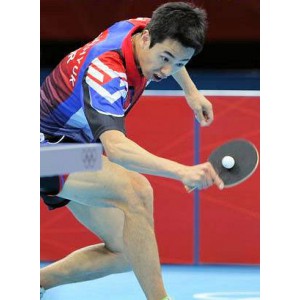
It’s as simple as that to describe, but of course the reality is that it’s harder in practical terms, and requires practice! As a youngster, I was lucky in that at my club I had a defender to practice against regularly who played with long pimples. This meant that I very quickly became accustomed to this style, and really this is key – putting the ‘rules’ into practice and learning just how much backspin you will get back after your topspin shot, and so on.
Once you are confident and have learned these basics to the point where you can do the ‘loop – push – loop – push’ pattern in your stroke making, you can start to experiment with looping two or three balls consecutively, knowing that each time you will need to apply more topspin to lift the ball, and knowing that in return you will get your own spin reversed back at you with some hefty interest!
Remember that many combination bat players and defenders in particular like one paced attacking shots, as this helps them settle into a rhythm, and find their range – so variation is the key. If you can continue to mix the pace of your attacking shots along with the ‘loop – push – loop’ patterns, you’ll be making life much more difficult for them than simply playing one paced attacking shots.
I love Christmas! It’s a time for family, friends, and of course a little excess. Though it’s a little different for a professional player, I still allow myself a few more treats than normal, and I have to work that little bit harder in my practice and physical training in the new year to make sure I’m back in shape. As a full time player your body is one of your work tools, and it needs to be in tip top condition if you want to be able to rely on it!
That said, I know how important fitness is for any level of player, and the benefits and rewards it can bring to your play. I thought with it being early January and with perhaps some of you doing the same as me and indulging a little more than usual over the Christmas period, I’d use this instalment of ‘Play it Like Paul’ to look at Table Tennis specific fitness exercises that will help you shift the additional pounds, start the new year on a positive note and improve your performance on the table no end. 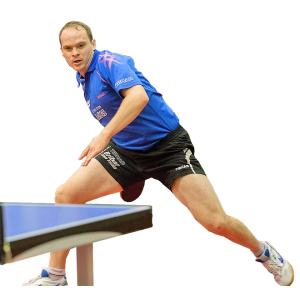
There are several factors to fitness when applied to our sport, but the main one is without doubt explosive fitness. short, sharp bursts tends to be how we play, for defenders this can be a little different but the principal is the same; we serve or receive, play a rally, then rest. If we compare this to say a cyclist or marathon runner, there exertion is constant where as ours is all about explosion, starting and stopping. It’s important if we want to get the most out of our fitness regime that we remember this – and whilst a good 2 to 3 mile jog once or twice a week is brilliant, I’m aware that most of you won’t have the time I do to dedicate to this type of thing, so I’ve tried to pick the most beneficial exercises I can that won’t break the time bank!
Ok, we’ll start with a couple of exercises for you to do away from the practice hall. Light stretching is recommended!
Then repeat!
Try doing this at first 5 times through. It’s not easy, but once you start to feel more comfortable after a couple of weeks, try it 6 times, then 7 times, and so on.
I’ve chosen just two high intensity exercises that won’t take long at all to do. Both of the above should take you no more than fifteen minutes to set up, stretch, go through them and then stretch again lightly before finishing. The beauty is you get a really beneficial workout in the time you can drive to the practice hall in, so for most of us its very achievable, and remember consistency is key!
Ok, now for some practice hall based exercises. Again, I’ve focused on high intensity exercises that can be done in a short period of time and will help to build that all important explosive fitness which will help your play.
Time yourself for twenty second and side step as quickly as you can in your ‘ready’ position between the table and the wall, using your non playing hand to touch each time. Repeat ten times for a great intense work out!
To increase the difficulty, add another 5 seconds on each time you want to pressure yourself when you start to see the improvement.
Try to complete this five times initially, and then increase again to six times, seven times etc. Your ability to move around the table will increase tremendously from applying yourself to these two exercises, I would recommend trying to complete them two to three times a week and don’t be discouraged if they are difficult at first, they are for us all!
By finding fifteen minutes twice a week away from the practice hall and by adding fifteen minutes onto the end of your practice session at the club twice a week also, after a month you will be fitter, faster, a better mover and have much better explosive fitness.
I can’t over emphasise the effect these things will on your play, it adds points to your game and if it’s helping to shift the Christmas excess it can only be a good thing!
Happy New Year from me to you all, and remember that with the above, consistency is key – stick at it!